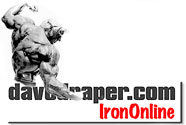Getting Started on Your New Workout Program
Your job is to get the job done well. That means reading the exercise descriptions, practicing the exercise with all your heart, allowing awkwardness to pass and error to slide. One of your aims is to discover how much weight is appropriate for each exercise. The standard approach is to warm up with a light weight for a set of 15 repetitions. In the subsequent sets, add weight till a set of 12 repetitions is an agreeable force; that is, one more rep might be too many, one less rep too few. Record your choice and stay with that weight as you continue to practice and mature in the workouts to follow.
It won’t be long before you are ready to increase the intensity with which you train. Once you are comfortable and confident with the early exercise resistance, once you’ve safely pushed and pulled with all your strength and the sets and reps are performed with precise form, it’s time to add some weight to your bar. In the early stages of training you are free to feel your way around your new activity and become familiar with its dimensions. Your repetitions might go up to 15 per set to achieve the fatigue that 12 reps at first afforded. This is good and you are gaining understanding. Now you are ready and able to add weight to your bar and drop the repetitions back to 12… or 10. Try this alteration, see how it feels and go from there.
Soreness and stiffness are common and a natural response to the novel load of exercise on the ligaments and muscle insertions. These signals keep you aware of your limits, but are not meant to frighten you into a corner. Each workout calls for a warm-up period as we prepare our sometimes-grouchy muscles for hard work.
Muscles are better prepared for heavy force than their bone-attaching tendons, and it is often the unconditioned tendons that present initial pain or injury. Your first three to four weeks are a conditioning process for the entire system that has longed for your attention. The heart, lungs and vascular system are enriched by the new muscle overload. Much of the initial strength increase you enjoy will be from improved neuro-muscular pathway articulation, not an increase in muscle size. You’re getting in shape to take on your environment, dominate it and lose those unwanted surface pounds. The timing could not be better.
Doing the job well calls for you to be entirely present during your workout. You can slide on through, thinking of a hundred other things, but you’ll miss it, you won’t get it, you’ll be in the dark and you’ll be sorry. Prepare for your workout by “psyching up” as the time nears, recalling your purpose and visualizing your goals. You have an hour, three days a week. Empty your mind and focus on the exercises, their proper execution and the muscles involved throughout the range of motion. Appreciate the work and the struggle and how to affect the particular tracking of the weights. Most people don’t have the courage or foresight to lift weights, a tough and toughening challenge. You’re a hero.
Note the pump (blood filling the working muscles for support and flooding them with oxygen and nourishment) and the burn (localized “hot-sting” produced by lactic acid, a metabolic byproduct that accompanies muscle overload). These two popular phenomena are signs of successful exercise application and the more you achieve of each the greater your training gratification. The more gratification, the harder you train and the greater the results; the greater the results, the deeper the commitment, the longer the investment and the more weight you lose, permanently; and you’re back to gratification and so on and so on…There’s more, and it keeps getting better. I promise. Wait till the endorphins hit. You are being indoctrinated.
The structure develops. You are reacting, responding and adapting in innumerable ways as your body and mind absorb the impact of training. We talked earlier about the dramatic exercise-induced external and internal co-functions, the visible and the invisible benefits, and the synergy of their activities (hormonal activity, muscle density providing oxygen absorption and fat burning, etc.). You are prospering with compounding interest, and your investments are young.
The idea behind progressive resistance training is to increase the workload on your muscular system slowly and regularly through the manipulation of exercises, resistance, pace and various training techniques. The basic methods are discussed in these pages and will take you a long way to accomplishing your admirable goals.
You’ve already gone through phase one by adding weight to the bar. Next, one month into your start-up routine, you continue by adding one exercise a week for the next four weeks from the secondary list. Two or three sets of each movement further develop a practical network of muscle fibers, stimulate muscle tone and the metabolic processes, and prepare you for more aggressive training techniques. The joys of living, renewing and producing are sweeter than Tupelo honey.
I’m proud. You proud? We’re proud. Not arrogant or conceited, just proud.
Go back to the AARP intro page
Before you get distracted, please sign up for Dave's free weekly newsletter, so we can send you his suggestions for staying motivated over the years to come. We promise not to sell or loan our email address list, and there's an "unsubscribe" link at the bottom of each mailing for your convenience.
Join in our IronOnline forum camaraderie—we'd love to have you join in the conversation with your thoughts or questions.
Which of Dave's books is right for you?
You've known of Dave for a while, train off and on and need motivation
Boy, it's time to get started; you're couch-bound and are ready to heed the wake-up call
Ah! Muscle Beach reminds you of high school and you sure do love the memories
You're geared up and loving the Draper articles, but they end too soon

